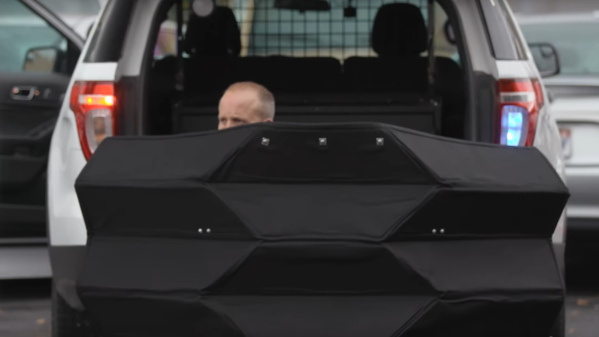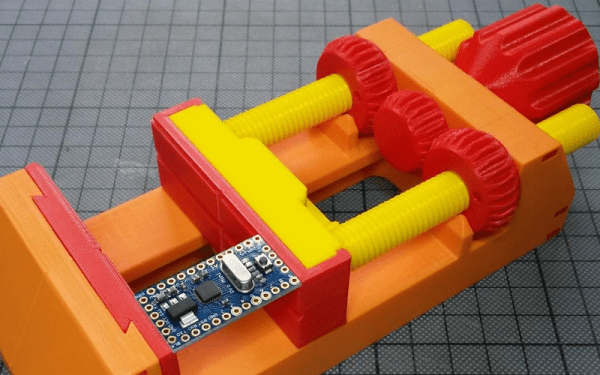At some point, most of us have learned a little of the ancient art of origami. It’s a fascinating art form, and being able to create a recognizable model by simply folding paper in the right order can be hugely satisfying. Most of us move on to other pursuits once we master the classic crane model, but the mathematics behind origami can lead some practitioners past the pure art to more practical structures, like this folding ballistic barrier for law enforcement use.
The fifty-pound Kevlar and aluminum structure comes from Brigham Young University’s College of Mechanical Engineering, specifically from the Compliant Mechanisms Research program. Compliant mechanisms move by bending or deflecting rather than joints between discrete parts, and this ballistic shield is a great example. The mechanism is based on the Yoshimura crease pattern, which can be quickly modeled with a piece of paper. Scaling that up to a full-sized structure, light enough to be fielded but strong enough to stop a .44 Magnum round, was no mean feat. But as the video below shows, the prototype has a lot of potential.
Now it’s your turn: what applications have you seen for compliant mechanisms? Potential applications range in scale from MEMS linkages for microinjecting cells to huge antennas that unfurl in orbit. We’ve featured a few origami-like structures before, like this self-assembling robot or a folding quadcopter, but neither of these really rates as compliant. This elegant parabolic satellite antenna is more like it, though. There are applications for designing origami and a mathematical basis for the field; has anyone tried using these tools to design compliant structures? Sound off in the comments below.
Continue reading “Ask Hackaday: What Can You Do With Origami?”
















